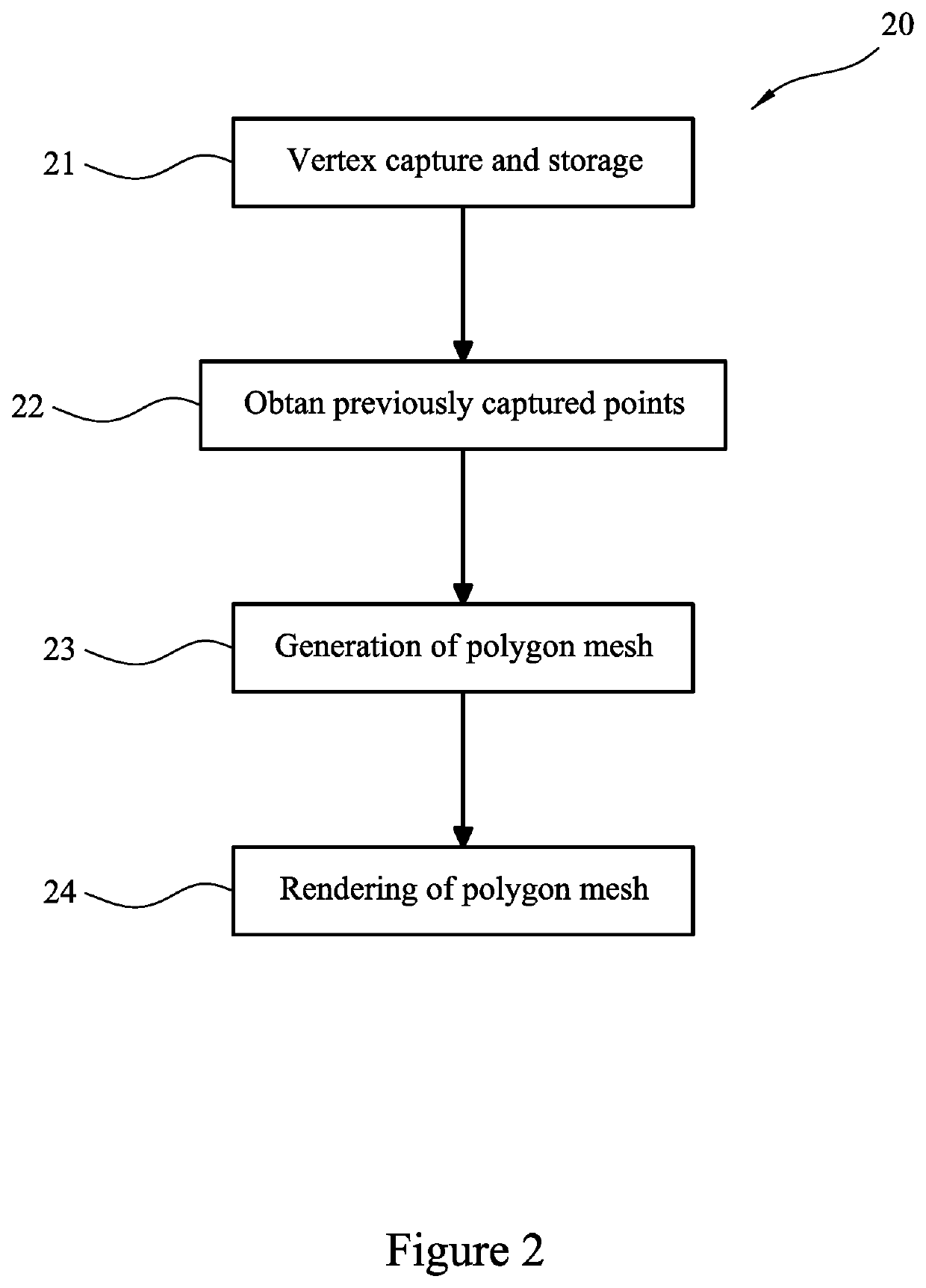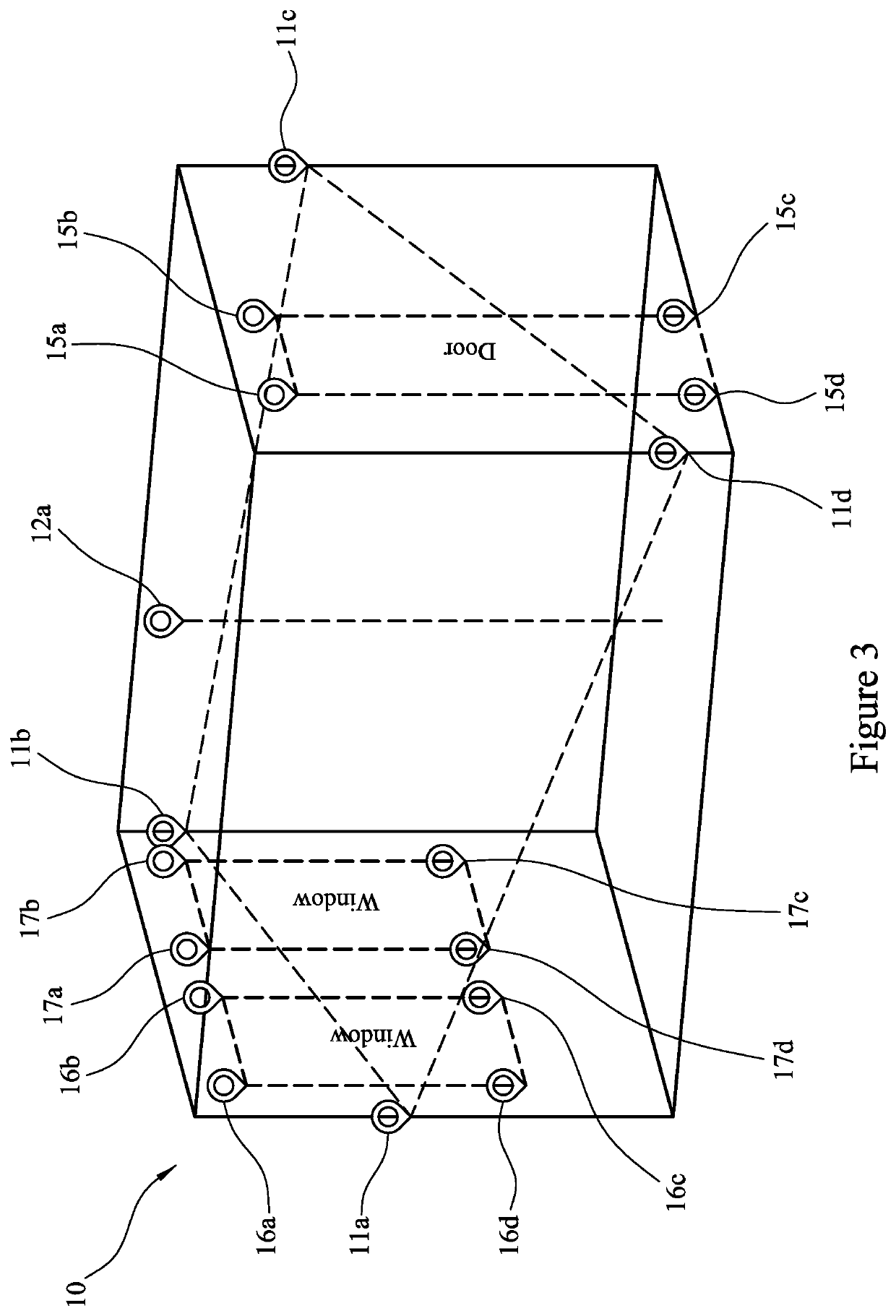Generating Virtual Representations
a virtual representation and representation technology, applied in the field of generating virtual representations, can solve the problems of limited processing capacity and battery life, computational complexity ineffectiveness of known mesh generation techniques,
- Summary
- Abstract
- Description
- Claims
- Application Information
AI Technical Summary
Benefits of technology
Problems solved by technology
Method used
Image
Examples
Embodiment Construction
[0069]By way of an example, FIG. 1 illustrates a three-dimensional interior space 10 for which a virtual representation may be generated.
[0070]The interior space 10 includes interior surfaces 111, 112, 113, 114, 121 and 122. Interior surfaces 111-114 are walls of the interior space 10, whereas interior surface 121 is a ceiling and interior surface 122 is a floor of the interior space 10. In FIG. 1, walls 111 and 112 are opposite to each other, and walls 113 and 114 are opposite each other with wall 113 in the foreground and wall 114 in the background.
[0071]The interior surfaces of the interior space 10 have vertical edges (not numbered) where two adjacent walls meet, and horizontal edges (also not numbered) where a wall meets either the ceiling 121 or the floor 122. The interior space 10 also has corners (not numbered) where two adjacent walls meet either the ceiling 121 or the floor 122. In this description, unless the context dictates otherwise, a point said to be “located on an e...
PUM
 Login to View More
Login to View More Abstract
Description
Claims
Application Information
 Login to View More
Login to View More - R&D
- Intellectual Property
- Life Sciences
- Materials
- Tech Scout
- Unparalleled Data Quality
- Higher Quality Content
- 60% Fewer Hallucinations
Browse by: Latest US Patents, China's latest patents, Technical Efficacy Thesaurus, Application Domain, Technology Topic, Popular Technical Reports.
© 2025 PatSnap. All rights reserved.Legal|Privacy policy|Modern Slavery Act Transparency Statement|Sitemap|About US| Contact US: help@patsnap.com



